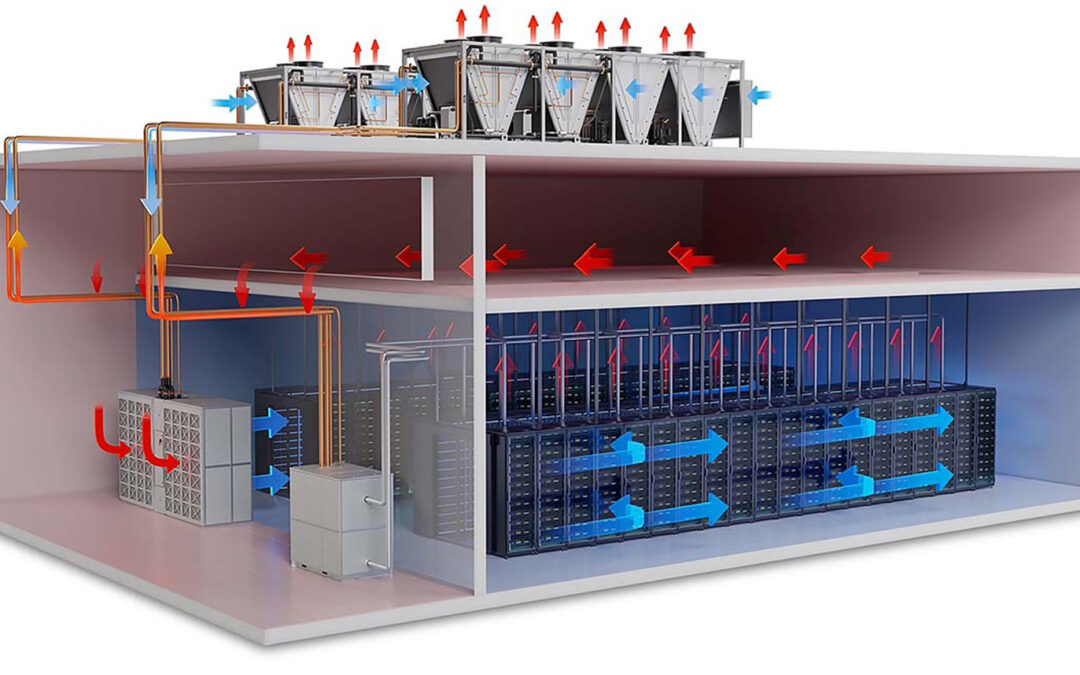Munters’ Data Center Cooling
Trends and Methods in Data Center Cooling
The trends and methods in the data center cooling arena have changed substantially over the last several decades (Yes, I am old enough to be in my fourth decade in this industry!!!). We’ve seen an evolution since the early days of liquid-cooled main-frames to CRAC (Computer Room Air Conditioning) units with electric reheat and humidification. Today’s cooling systems have changed drastically with novel approaches utilizing outside air and flooded rooms. There are numerous trends that drive these changes. In this article, we will discuss one such trend – the use of containment.
Containment Systems
In a containment system, structures are installed to physically contain the airflow, usually from the hot aisles. The hot air is returned directly to the cooling unit without influencing or being influenced by the cold aisle. This raises the return air temperature, as compared to a non-contained system.
Typical contained return air temperature currently is in the range of 90°F to 100°F. And, with little or no hot-aisle air spilling into the cold aisles, supply temperature also can be higher, typically 70°F to 80°F. Higher return air temperature means many more possible hours of economizer and correspondingly fewer hours requiring mechanical refrigeration. Higher supply air temperatures contribute to this benefit as well and additionally allow the mechanical refrigeration to run more efficiently when it is needed (higher suction temperatures). It is important to recognize that computer equipment manufacturers deserve some credit as well for these higher temperatures, as they have worked to make the computer equipment more tolerant of higher temperatures.
Energy Consumption and Target PUE
When talking about energy consumption, there is an important term to understand – PUE or Power Usage Effectiveness. This is the ratio of the total power or energy required by a data center facility to the power or energy consumed by the IT equipment directly. Said differently, PUE = (IT + Ancillary power or energy)/IT power or energy. The concept of PUE can be applied to an entire facility or to a specific system. For example, Cooling PUE = (IT + cooling energy or power)/IT energy or power. For the balance of this article, the term PUE will refer to cooling PUE.
It’s important to differentiate between peak PUE and annual PUE. Peak PUE = (IT+ cooling peak power)/IT peak power. This measure is useful in determining electrical distribution and emergency generation capacity but does not tell us all that much about the energy efficiency of the cooling system. Annual PUE = (IT+Cooling) Energy/IT Energy over the course of a year. This is a good measure of the efficiency of a cooling system.
A good target for peak PUE is to be less than 1.4 and for annual PUE to be below 1.15. These values were both significantly higher in recent decades, indicating a positive trend in energy reduction.
The Importance of Energy Consumption in Data Center Cooling
Managing energy consumption in data center cooling will continue to be a primary goal for years to come. Accordingly, many in the data center cooling industry are working hard to reduce energy consumption whenever possible. Munters Data Center Technologies exemplifies this, and we are proud to partner with Munters to deliver best-in-class cooling solutions for our clients’ data centers.
Contact your Accuspec representative for more information.

















